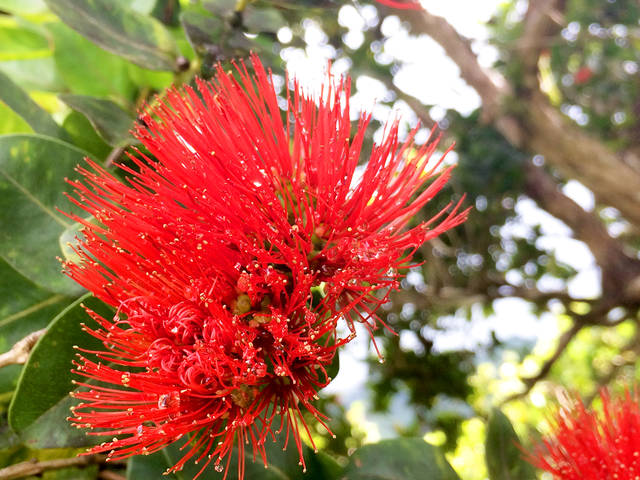LIHUE — The discovery of Rapid Ohi‘a Death on Kauai has kicked up the timing on statewide surveillance efforts, and invasive species groups across the main Hawaiian Islands are increasing the time spent on research into the disease.
Five trees were discovered dead in early May in Kauai’s Moloa‘a Forest Reserve by Department of Land and Natural Resources’ botanist Adam Williams and all signs pointed to ROD as the cause of death.
After a week’s worth of research and the combined efforts of non-governmental organizations, educational organizations and the state, further tested the trees.
Those tests show it’s the less aggressive of the two fungi known to cause ROD.
“What we are finding on Kauai is a very different pathogen from the fungus killing large numbers of ohi‘a trees on Hawaii Island,” said Lisa Keith, lead researcher from the U.S. Department of Agriculture’s Agricultural Research Service when the trees were discovered.
Data collection and research are in full swing on Kauai as team members work on understanding where the fungus originated and how far it has spread.
Recently, researchers found there are two different species under the ROD umbrella. Ceratocystis huliohia, the less serious of the two, recently confirmed on Kauai and Ceratocystis lukuohia, which is largely responsible for the devastation of millions of ohi‘a trees across 135,000 acres on Hawaii Island, since ROD was first identified more than four years ago.
Throughout the rest of the state, the discovery of the fungus on Kauai has increased surveillance efforts. An example of that is on Oahu, where the Oahu Invasive Species Committee conducted part of a regularly planned aerial sketch mapping mission over the southern Ko‘olau Mountains Tuesday.
“It’s not that we weren’t taking this seriously before; with the Kauai confirmations our sense of urgency went up. We’re going to try and sample a lot more trees and get all of our bi-annual aerial surveys completed on time,” said Kepano Carvalho, a field associate with the Oahu Invasive Species Committee.
It’s not believed at this time that Ceratocystis huliohia spread from the Big Island to Kauai, according to DLNR researchers.
Since it kills trees much slower than its more aggressive cousin, researchers think it could be present in native forests around the state and have been so for a very long time. Increased awareness of what to look for by people working in and surveying in forests may be the primary reason the trees on Kauai were detected and subsequently tested.
Currently, no treatment exists for either strain of Rapid Ohi’a Death.
Anyone may report dead or dying ohi’a to oisc@hawaii.edu or 266-7994. Photos of the tree and specific locations are extremely helpful to be able to sample the tree later.
•••
Jessica Else, Environment reporter, can be reached at 245-0452 or at jelse@thegardenisland.com


